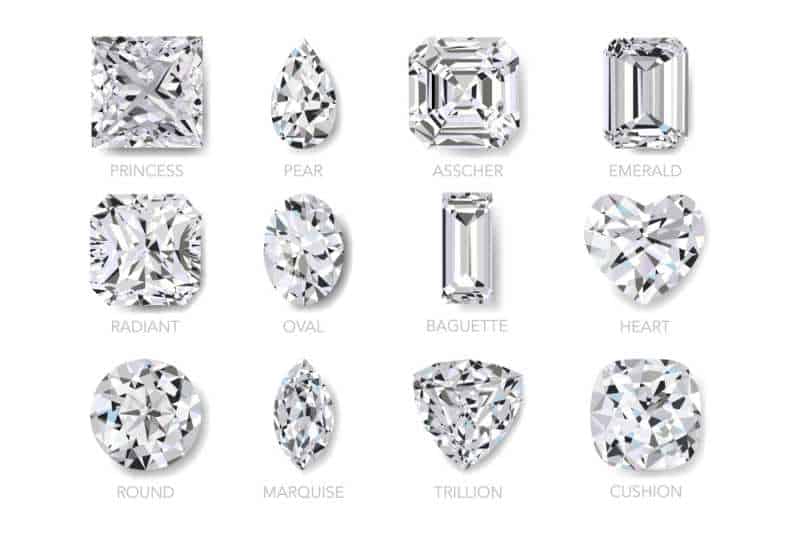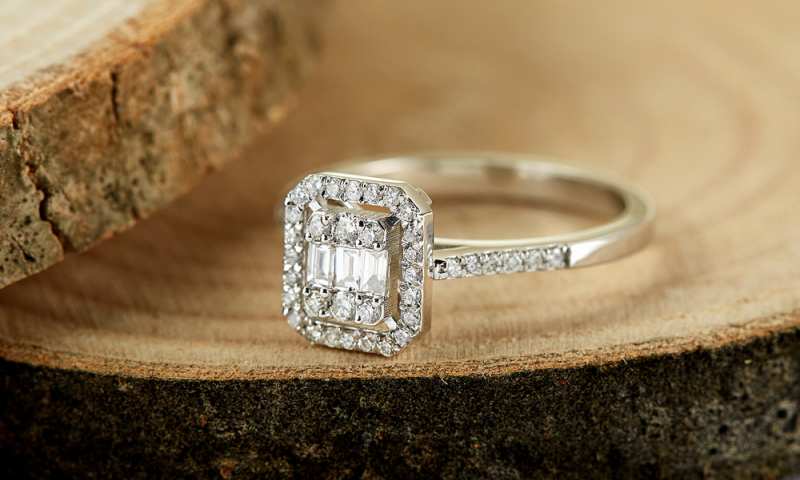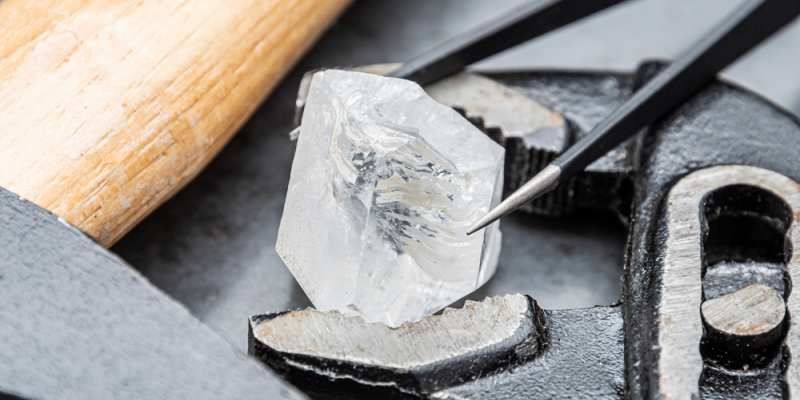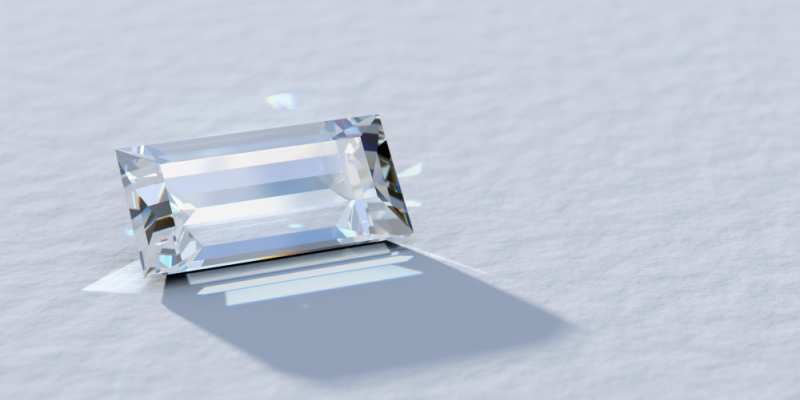If you have a preference for baguette-shaped diamonds, you’re not alone. They are highly sought-after for their beauty and unique appeal, and you’ll find a wide selection of jewelry adorned with baguette diamonds in today’s market.
However, you may have concerns about the durability of baguette diamonds and whether they are prone to cracking. It’s natural to want to understand any potential issues before making a purchase.
In reality, no diamond shape is completely immune to cracks, and this includes baguette diamonds. In fact, baguette diamonds are considered one of the more delicate diamond shapes.
You might wonder why this is the case, especially since diamonds are known for being the hardest material in the world. Additionally, you may be curious about measures you can take to protect baguette diamonds. Rest assured, we have answers to all your questions right here.
Whether you choose to delve deeper into this topic is entirely up to you. However, if you currently own or plan to acquire a baguette diamond, we encourage you to keep reading for valuable insights and guidance.
DESIGN YOUR OWN ENGAGEMENT RING: START WITH A SETTING OR START WITH A DIAMOND. IT’S REALLY UP TO YOU!

Things To Consider Before Buying A Diamond
Whether you’re well-versed in diamonds or not, you’ve likely heard that these precious gemstones are mined from various locations around the world. It’s true that there will come a time when these sources run out, and the availability of diamonds on Earth will reach its maximum limit. However, that’s a topic for another discussion.
For now, it’s reassuring to know that there are still plentiful diamonds scattered across the globe, and the chances of not finding them displayed in jewelry shops are quite slim. That’s some good news.
On the flip side, purchasing diamonds can be quite expensive. Regardless of your level of knowledge about diamonds, it’s widely understood that these gems come with a hefty price tag. Finding a quality one-carat diamond for less than $2000 is nearly impossible. If you decide to buy diamond-embedded jewelry, be prepared to save a significant amount of money.
Before you enter the diamond market and make your first purchase, there are a few important things to know. First and foremost, regardless of the shape and cut of your desired diamond, it’s essential to ask the jeweler for crucial information about the stone.
This information is commonly known as the diamond’s certification, which serves as evidence of the diamond’s authenticity. All natural diamonds must be properly documented, including the time, date, and location of extraction, which is recorded on an official certificate. This certification serves as evidence of the diamond’s origin.
If a jeweler fails to provide a certificate for a diamond, it’s advisable to refrain from buying it, as there’s a high chance that something might be amiss. The global issue of blood diamonds is a concern, and unwittingly participating in it should be avoided.
Secondly, diamonds come in various shapes, each with its own significance in the diamond industry and culture. Some popular diamond shapes include baguettes, briolettes, trapezoids, triangles, trillions, rose cuts, and shields. In this discussion, we’ll focus on baguette diamonds and their susceptibility to cracks and breakage.
It’s important to recognize that diamonds are the hardest natural materials produced by Mother Nature. Out in the open, there isn’t a natural material that can damage a diamond in terms of cracking, dissolving, or breaking.
However, when the human element is introduced, anything becomes possible. Therefore, it’s crucial to handle diamonds with care and ensure they are well-protected.

Nothing Can Withstand The Raw Power Of Humans
We utilize our physical strength in our daily lives without often pausing to contemplate its significance. Whether it’s engaging in sports or completing household chores, our muscles possess remarkable capabilities.
Now, you might wonder how this relates to our discussion on diamonds, particularly baguette diamonds. The connection lies in the potential challenges that arise when human strength unintentionally impacts these precious gemstones.
Allow us to clarify. Whenever you wear jewelry adorned with diamonds, there is always a slight risk of inadvertently damaging the piece. Despite diamonds being the hardest naturally occurring materials, they can still crack and break under specific conditions.
Baguette diamonds, in particular, have a higher likelihood of fragility compared to other diamond shapes. This makes them more susceptible to cracking and breakage, which is why many individuals tend to avoid working with them.
However, there are still those who find the elegance and allure of baguette diamonds irresistible. Ultimately, it boils down to personal preferences.
If you are considering purchasing a baguette-shaped diamond, there are a few essential factors you should be aware of.

All Diamonds Can Crack, Especially Baguette Diamonds
Baguette diamonds have a higher likelihood of cracking compared to other diamond shapes, and a closer look reveals why.
The cut of baguette diamonds is designed to be long and flat, exposing a larger surface area than other cuts. Diamond cutting requires precision and expertise, with professionals employing various angles, pressure, and techniques to shape the diamond. For baguette diamonds, the focus is on achieving a flat and elongated appearance, enhancing the clarity of the surface area.
These diamonds are commonly used in bracelets and watches due to their compatibility with the round shape of such accessories. They are also found in gold and platinum rings. It’s important to note that diamonds should only be set in jewelry made of gold or platinum, as silver is not recommended.
When purchasing jewelry with baguette diamonds, it is crucial to handle it with care to avoid accidentally cracking the diamonds. Many people underestimate the fragility of baguette diamonds and may not give them the attention they require. Even a small amount of direct pressure can lead to slight cracking, and once a crack occurs, there is a high risk of complete breakage.
Although diamonds are known for their durability, they are not completely resistant to damage. Similar to how a small, focused pressure point can shatter glass, baguette diamonds can break with a careless act applying a certain amount of force. As a result, people often choose to wear baguette diamonds infrequently.
Due to their fragility and perceived lower quality compared to other cuts, baguette-shaped diamonds are relatively rare and may have a lower market value. However, they can still be found in many jewelry shops, particularly in golden bracelets and watches.
One common concern with baguette diamonds is the uncertainty of authenticity. Some individuals may question whether they possess a genuine baguette-shaped diamond or not.

Don’t Test The Legitimacy Of A Baguette Diamond With A Hammer
There is a common misconception that testing a diamond with a hammer is a reliable method. However, this practice is not recommended for several reasons.
While it is true that natural diamonds are highly durable and can withstand significant pressure, using a hammer to test a diamond’s authenticity is not a safe or effective approach. Attempting to smash a diamond with a hammer can cause harm to yourself and potentially damage the diamond. Just because diamonds are the hardest natural materials does not mean they should be handled roughly.
The weight and force of a swing from a steel hammer can lead to cracking or breaking of the diamond. In the worst-case scenario, the diamond may shatter completely. Regardless of whether the diamond is a baguette shape or not, it will not lose its value simply by being struck with a hammer.
If you are curious about what happens when diamonds are subjected to the impact of a hammer, it is advised to seek information from reliable sources rather than attempting the experiment yourself. It is important to handle your baguette-shaped diamonds with caution to prevent them from cracking or breaking. Nobody wants to have damaged or broken diamonds, so it is essential to treat baguette diamonds with care when wearing them.

Conclusion
Baguette diamonds are a well-known diamond shape that can be found in many jewelry shops. However, they are often seen displayed behind thick glass walls because they can be challenging to sell. One of the reasons for this is the higher risk of cracking associated with baguette diamonds.
While any diamond has the potential to break, baguette diamonds are more prone to cracking if not handled with care. Applying excessive pressure to a baguette diamond can result in internal or external cracks. It’s important to note that even small cracks can significantly diminish the value and worth of the diamond.
To preserve the integrity of your diamonds, especially if they are baguette-shaped, it is crucial to keep them protected at all times. Taking precautions and handling them with care will help minimize the risk of damage and maintain their value.


